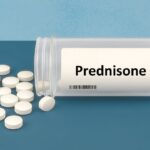For people living with multiple sclerosis (MS) , the search for effective treatment options can feel like a never-ending journey. While disease-modifying therapies (DMTs) have improved outcomes for many people with MS, they don’t work for everyone and typically require decades of use. For certain people with relapsing-remitting MS (RRMS) , however, there may be an alternative: an aggressive but potentially powerful treatment called autologous hematopoietic stem cell transplantation (aHSCT). This procedure “reboots” the immune system, potentially offering relief from MS flare-ups and disease progression. The aHSCT treatment isn’t new, but it’s not a widely used option to treat MS in the United States. That may change, thanks to larger studies that show strong results and fewer risks. Learn how aHSCT works, who may be a good candidate for the therapy, and how effective it is in controlling disease and stopping MS attacks.
How aHSCT Works aHSCT Explained In people with relapsing MS, the immune system mistakenly attacks the protective covering of nerve fibers (called myelin) in the brain and spinal cord. Autologous hematopoietic stem cell transplantation (aHSCT) is a type of bone marrow transplant that works by “resetting” the immune system, with the goal of stopping those attacks by the immune system and thereby slowing or even halting the disease’s progression. Stem cells are cells with the potential to develop into many different types of cells in the body — they serve as a repair system for the body. “Autologous” means that the therapy is using stem cells from the person themselves, and “hematopoietic” means they are blood-forming stem cells.e60dc2a1-f33c-4a05-9b50-8e3e8e597629bba45f02-1546-4cc9-a3d6-03bd073acb8a This reboot approach isn’t new. It was first tried in MS patients in the 1990s. Since then, the procedure has become safer and more refined, with research suggesting it may offer years of remission for some people.e60dc2a1-f33c-4a05-9b50-8e3e8e597629ced52477-1445-4366-b6df-3ca241394c31
The aHSCT Procedure The aHSCT Procedure “It’s a somewhat complicated procedure with several steps,” says Jeffrey Cohen, MD , a professor of neurology and the director of the experimental therapeutics program at Cleveland Clinic in Ohio. Dr. Cohen describes the four main steps as follows. Stem Cell Collection Pretreatment releases the hematopoietic stem cells from the bone marrow (where they normally reside) into the blood. From there, they’re collected, usually by what’s called leukapheresis, which is similar to dialysis , and then frozen in a lab. Conditioning (Immune Ablation) The patient undergoes chemotherapy (drug therapy) to destroy the misfiring immune cells that cause MS relapses. Stem Cell Infusion The harvested stem cells are thawed and infused back into the body to regenerate the immune system. Recovery During this phase, the immune system gradually rebuilds. Patients are closely monitored for infections or other complications. “Typically, it’s done as an inpatient procedure and takes about four to six weeks. After they are discharged from the hospital, they recover over several months,” says Cohen.
Who Is Considered a Good Candidate for aHSCT? Who’s a Good Candidate? “Right now, aHSCT is primarily used when someone has not benefited from the currently available medications — they continue to have attacks or activity on their MRI scan [new or enlarging MS lesions ] despite treatment with the available medications — it’s a relatively limited number of people,” says Cohen. Additionally, a good candidate would be someone who has relatively early relapsing multiple sclerosis and who has a moderate level of disability (at most) and no other significant medical issues, he says. “Conversely, someone with long-standing multiple sclerosis, with primarily a progressive course, who has not had recent attacks, and who has a high level of disability or other medical conditions would be less likely to benefit and more likely to have complications,” says Cohen.
How Effective Is aHSCT? Effectiveness of aHSCT “In people with MS, there have been a number of reports of very marked benefit, very potent efficacy, and very good disease control, sometimes lasting for many years without the need for restarting disease-modifying medication,” says Cohen. In a recent United Kingdom study (the only study so far that has used a comparator group not getting aHSCT), people who had aHSCT experienced fewer relapses during the five-year follow-up than people taking either of two high-efficacy DMTs, ocrelizumab (Ocrevus) and alemtuzumab (Lemtrada). The aHSCT group had less new MRI activity than the alemtuzumab group and about the same (low) amount of new MRI activity as the ocrelizumab group. Long-term disability progression was about the same in all groups.e60dc2a1-f33c-4a05-9b50-8e3e8e59762966af47ed-5a19-4030-870c-63a35436619a A Swedish study of 174 people who underwent aHSCT before 2020 found that at 5 years, 73 percent of people had no evidence of disease activity.e60dc2a1-f33c-4a05-9b50-8e3e8e597629c0381f33-7083-40ce-8458-e47dfe003735 Many of these trials are limited by design: They take place over many years in the same hospital system, or there is no control arm. But aHSCT shows strong efficacy in MS in the existing data, says Cohen. “The other caveat is that in the UK trial, about 10 to 15 percent of the people in the transplant arm had either an attack, a return of attacks, or worsening disability during the five years of follow-up in the study. So although it [aHSCT] works quite well, it’s not a cure for some people,” he says. Some ongoing trials are looking at whether aHSCT might be used earlier in the treatment sequence, rather than waiting until all the other options have failed, he says.
How Long Do the Effects Last? How Long Do the Effects Last? One of the most exciting aspects of aHSCT is its potential for long-term remission: Many people who respond to treatment can go 5 to 10 years or more without needing additional MS medications, says Cohen. Still, the therapy isn’t necessarily a permanent fix. Some people may experience disease activity later on and need to resume medication.
Safety of aHSCT aHSCT Safety The procedure does have some risks, mostly from the chemotherapy treatments. Wiping out the immune system makes people more vulnerable to infections, some of which can be life-threatening. People who are older, have greater disability, and have other health conditions like heart or lung disease are at higher risk for complications.e60dc2a1-f33c-4a05-9b50-8e3e8e597629dcdb9385-a51e-4aab-b827-4735d6209763
Availability of aHSCT in the United States aHSCT Availability Despite its potential, aHSCT is not widely accessible in the United States. “In the U.S., it’s offered by a small number of institutions. For the most part, it’s done in the context of clinical trials, but there are some institutions, including ours (Cleveland Clinic) that will sometimes offer aHSCT to select patients outside of a clinical trial,” says Cohen. It’s important that it should only be done by centers that have experience and expertise in the procedure, he adds. The procedure is still considered experimental by many insurance providers, and cost coverage is handled on a case-by-case basis by most payers, says Cohen. “Most are willing to consider it, though you usually have to go through a fair number of appeals to get it covered. At the moment, as far as I know, no payer routinely covers it,” he says.
Will aHSCT Become a Mainstream MS Treatment? The Future of aHSCT It’s possible that aHSCT will become a more mainstream treatment for MS, says Cohen. There are ongoing studies, such as the BEAT-MS trial , that are comparing aHSCT to the best available medications to compare efficacy and overall cost, he says. The National MS Society is a supporter of stem cell therapies, and the organization has invested over $60 million in research.e60dc2a1-f33c-4a05-9b50-8e3e8e5976292dd6861c-1806-43d9-8ace-a8696368e51f Some experts believe that aHSCT could be cost-effective. While the transplant procedure is expensive, with most of the cost occurring at the time of transplant, the cost of MS medications can accumulate year by year. If these trials show that aHSCT can be done safely and is cost-effective, then insurance coverage would likely improve, and the therapy would become more mainstream, says Cohen.
The Takeaway Autologous hematopoietic stem cell transplantation (aHSCT) is a long-term treatment option for some people with relapsing-remitting MS, especially those who have not responded to other treatments. Studies suggest aHSCT can lead to years of remission and fewer relapses, but it is not a guaranteed cure and may not be effective for everyone. The procedure carries serious risks, including vulnerability to infections and complications from chemotherapy. aHSCT is not yet widely available in the United States, but ongoing trials and growing research support may lead to its becoming more accessible in the future.
Read the full article here
Leave a comment




